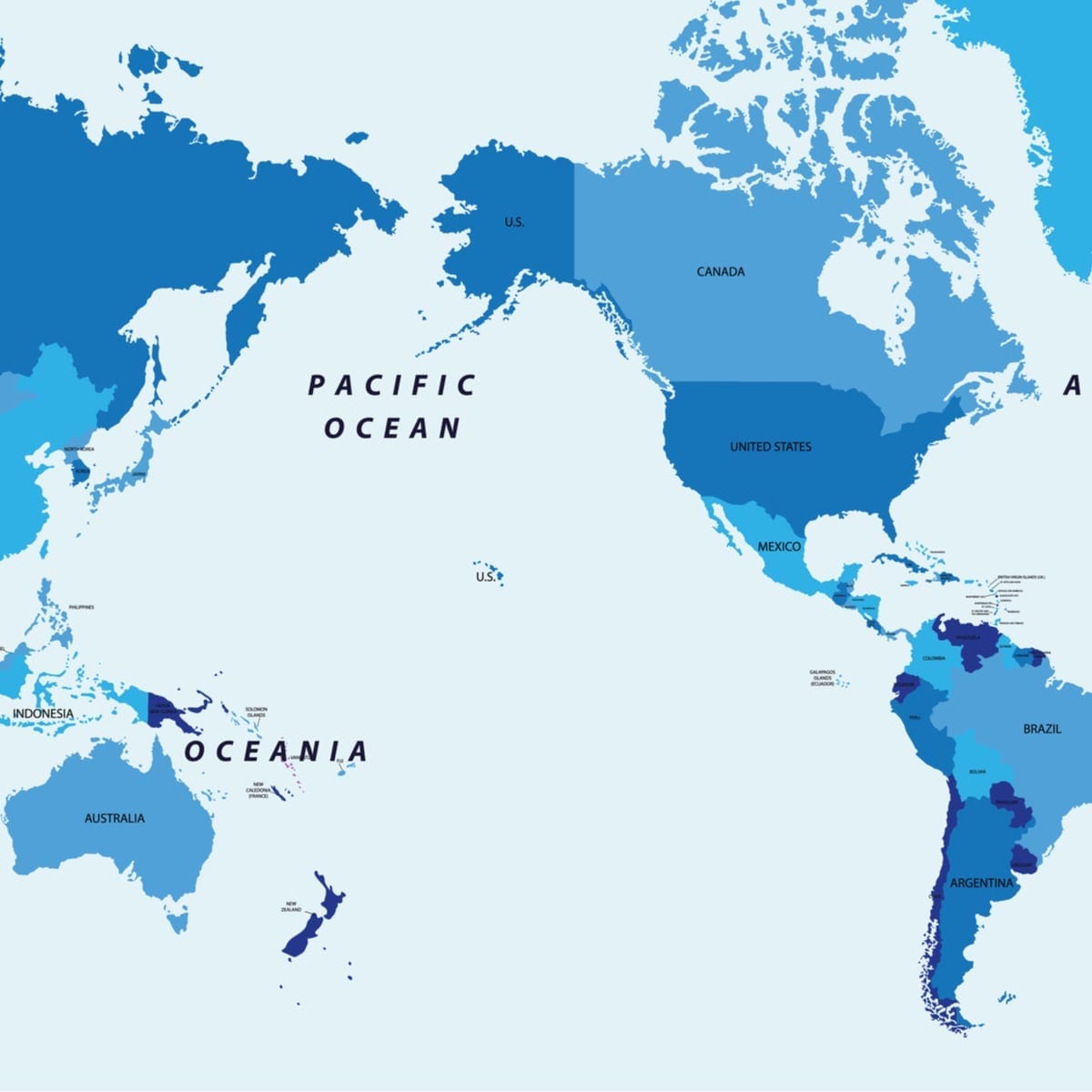Have you ever been stumped by a New York Times crossword clue about a Pacific island and just guessed “Guam”? You’re not alone. While Guam is frequently the five-letter answer, it only scratches the surface of America’s Pacific territories. This article delves into the rich history, diverse cultures, and strategic importance of these often-overlooked parts of the United States, going beyond simple crossword solutions. We’ll explore Guam, American Samoa, and the Northern Mariana Islands, uncovering their unique stories and their complex relationship with the mainland. We’ll also touch upon the Freely Associated States, independent nations with special ties to the U.S. It’s a journey through history, culture, and politics, all to understand what it means to be American in these far-flung corners of the Pacific. Looking for a great deal? Discover how to find asalvagecar at an incredible price. Then, explore the unique offerings and friendly community of apers arkansas and uncover its hidden gems.
Unveiling America’s Pacific Island Gems
Recent NYT crossword puzzles have featured clues like “U.S. territory in the Pacific Ocean,” often leading to the answer “Guam.” This recurring theme highlights a growing curiosity about these islands. But beyond their crossword fame, these territories boast diverse cultures, compelling histories, and surprising strategic importance.
Understanding America’s Island Territories
The relationship between the U.S. and its Pacific territories is complex. While residents are U.S. nationals, often born with U.S. passports, their political rights differ significantly from those of citizens living on the mainland. This stems from a historical legacy of acquisition and evolving political statuses. For instance, residents of these territories cannot vote in U.S. presidential elections.
Here’s a quick overview of the key U.S. territories:
| Territory | Status | Acquired | Distinguishing Features |
|---|---|---|---|
| Guam | Organized, Unincorporated | 1898 | Major U.S. military presence |
| American Samoa | Unorganized, Unincorporated | 1899 | Distinct Polynesian culture |
| Northern Mariana Islands | Commonwealth | 1947 (trusteeship) | Tourism, garment industry |
These designations—”organized,” “unorganized,” “unincorporated,” and “commonwealth”—reflect varying levels of self-governance and the applicability of the U.S. Constitution. These distinctions have profound implications for the lives of the islanders.
A History Forged by Colonialism and Conflict
The history of these islands becoming U.S. territories is intertwined with colonialism and conflict. The Spanish-American War led to Spain ceding Guam to the United States in 1898. Around the same time, American Samoa became a U.S. territory. Following World War II, the Northern Mariana Islands, initially part of a UN Trust Territory administered by the U.S., chose to form a Commonwealth. These acquisitions, driven by geopolitics and expansionist ambitions, have shaped the islands’ trajectories.
Strategic Significance in the Pacific
These islands hold immense strategic value. Guam, with its significant military presence—including naval bases and airfields—is a crucial hub for American power projection in the Pacific. However, this presence can be viewed as both a protective shield and a form of occupation, highlighting the need to understand local perspectives.
A Kaleidoscope of Cultures
Beyond geopolitics, the human stories of these islands are captivating. American Samoa boasts a vibrant Polynesian culture. Guam’s Chamorro heritage blends indigenous and Spanish influences. The Northern Mariana Islands showcase a tapestry of Micronesian and Carolinian cultures. These islands represent a cultural richness that deserves to be celebrated and understood.
Facing the Challenges of the Future
Despite their natural beauty, these islands face challenges. Climate change, with rising sea levels, poses a very real threat. Economic development struggles, and the question of self-determination remains significant. Do the residents desire greater autonomy? Statehood? These are complex questions requiring careful consideration and dialogue.
A Closer Look at the Territories and Freely Associated States
Now, let’s delve deeper into each territory and explore the Freely Associated States:
American Samoa: A South Pacific Gem
American Samoa, an unincorporated and unorganized U.S. territory, maintains a close relationship with the U.S. government, with less local autonomy than other territories. Its South Pacific location gives it strategic significance.
Guam: Where Cultures Collide
Guam, an organized, unincorporated territory, is a cultural crossroads where Chamorro traditions meet Spanish and American influences. Its substantial U.S. military presence makes it a key player in America’s Pacific strategy.
The Northern Mariana Islands: A Chain of Diversity
The Northern Mariana Islands, a commonwealth of the United States, comprises 22 islands and islets with a mix of Carolinian, Chamorro, and Asian cultures. They enjoy a greater degree of self-governance than other territories, operating under their own constitution.
Beyond Territories: The Freely Associated States
The Republic of the Marshall Islands, the Federated States of Micronesia, and the Republic of Palau are independent nations with close ties to the U.S. through Compacts of Free Association. These agreements provide the U.S. with strategic access while the FAS receive defense support and economic assistance. The long-term implications of these compacts are still being studied.
American Samoa: The South Pacific Outpost
American Samoa, the answer to the crossword clue “U.S. territory in the South Pacific,” consists of six islands, the largest being Tutuila. Its volcanic peaks, rainforests, and coral reefs create a tropical paradise.
American Samoans are U.S. nationals, not citizens, which impacts their voting rights. They have a locally elected government, balancing traditional Polynesian customs with American influences. The future relationship between American Samoa and the U.S. remains a topic of ongoing discussion, with some advocating for greater autonomy and others for statehood.
| Feature | Description |
|---|---|
| Location | South Pacific Ocean |
| Status | Unincorporated U.S. territory |
| Capital | Pago Pago |
| Population | Approximately 55,000 |
| Land Area | 76 square miles (197 square kilometers) |
| Languages | Samoan (official), English |
| Currency | U.S. dollar |
| Main Industries | Tuna canning, tourism, government services |
The Pacific in the Late 1800s: A New Frontier for the U.S.
The late 19th century marked a turning point in America’s relationship with the Pacific. Hawaii’s annexation in 1898, driven by its strategic location and thriving sugar industry, exemplified this shift. The acquisition of the Philippines and Guam after the Spanish-American War further solidified America’s presence in the western Pacific, driven largely by the desire for increased trade with China. These islands became crucial coaling stations and naval bases, facilitating America’s growing influence in the region.
A Call to Deeper Understanding
The next time “U.S. territory in the Pacific Ocean” appears in a crossword, remember it’s more than just an answer. These islands and their people deserve our attention. Let’s move beyond simple solutions and engage with the rich tapestry of stories, cultures, and challenges that shape the lives of those living in these fascinating Pacific islands.
- Unlock Elemental 2 Secrets: Actionable Insights Now - April 2, 2025
- Lot’s Wife’s Name: Unveiling the Mystery of Sodom’s Fall - April 2, 2025
- Photocell Sensors: A Complete Guide for Selection and Implementation - April 2, 2025
















